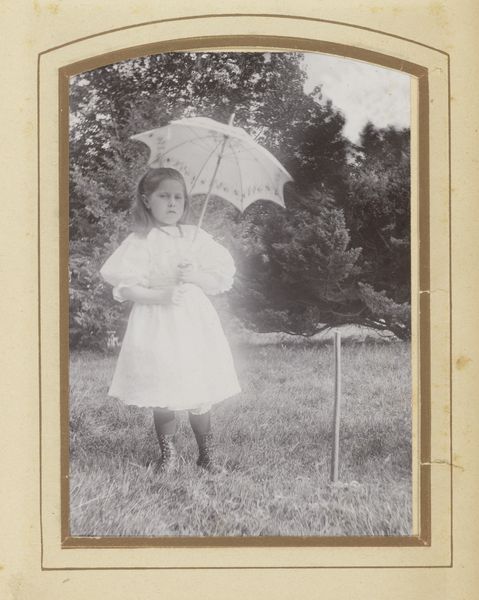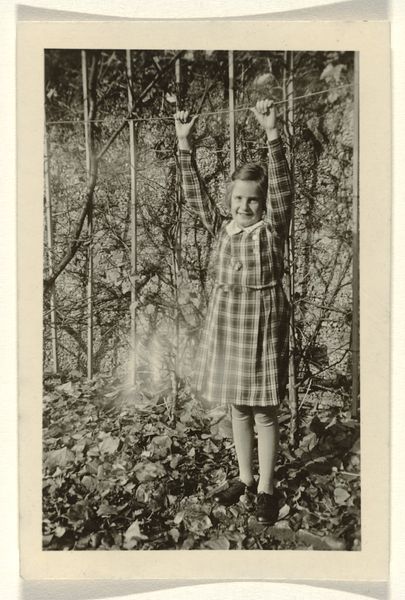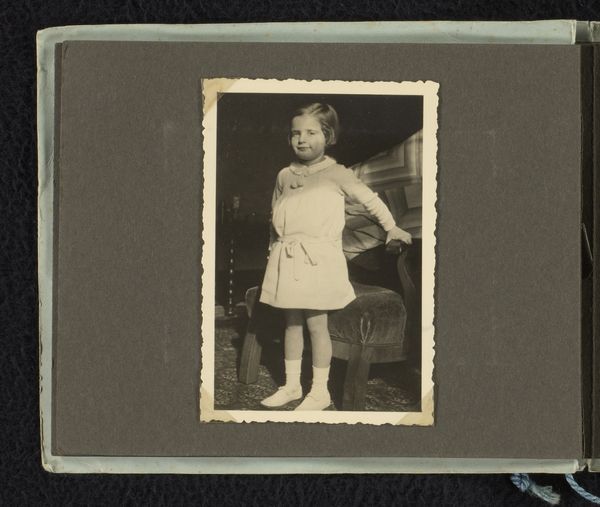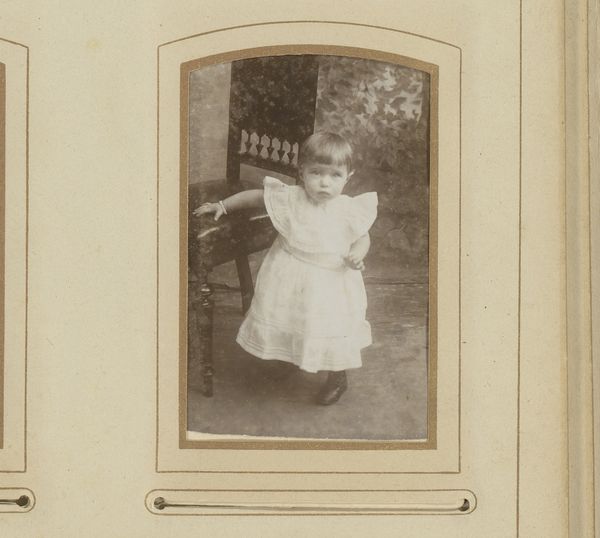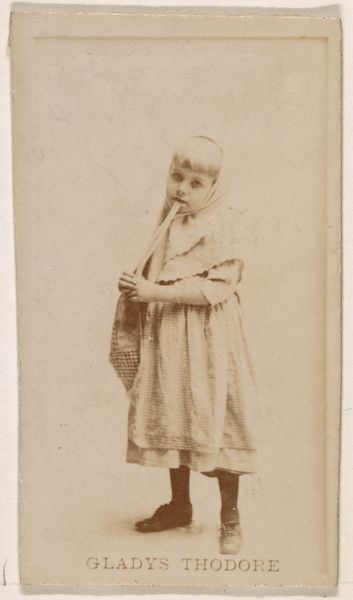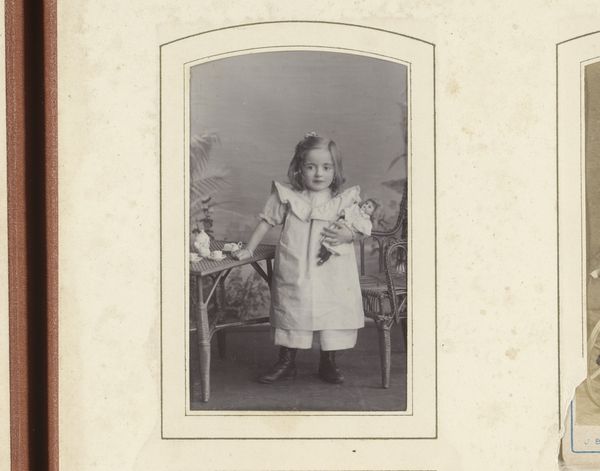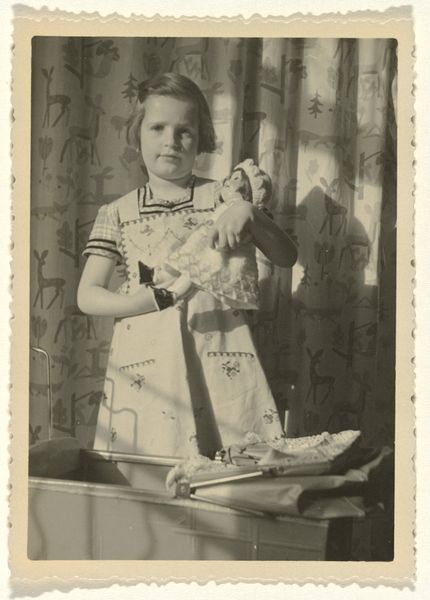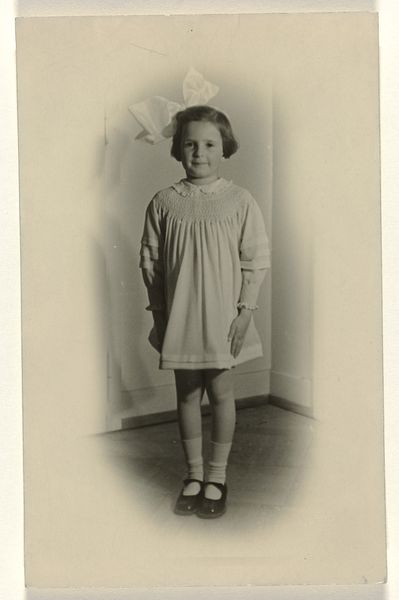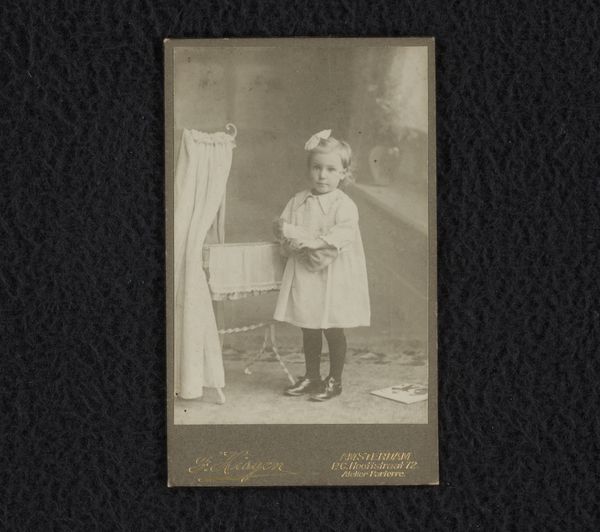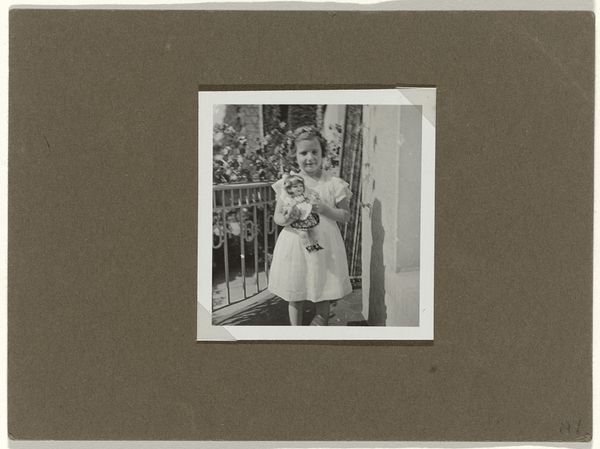
Isabel Wachenheimer buiten bij een stenen trap, in Stuttgart, april-mei 1935 Possibly 1935
0:00
0:00
Dimensions: height 90 mm, width 65 mm
Copyright: Rijks Museum: Open Domain
Curator: There’s a quiet poignancy in this photograph titled, “Isabel Wachenheimer buiten bij een stenen trap, in Stuttgart, april-mei 1935." It's possibly from 1935. Editor: The texture gets me first. That matte, almost gritty surface – it's a very physical presence. The image feels unearthed, doesn't it? Curator: Indeed, and knowing it’s archive photography really adds layers. This image pulls you into another world. Isabel stands frozen in time and evokes a specific mood. It speaks of memory, of a life lived in a world on the brink. It looks like she is on stage. Editor: Precisely! Consider the material reality here: the photographic paper, the chemicals, even the developing process itself. Each element reflects the limitations and capabilities of the technology of that time, influencing how we perceive both the subject, young Isabel, and the landscape around her. It reminds me that photography itself is a very material art. Curator: I like what you’re saying about the interplay of landscape, which is no accident, as this particular landscape serves as a stark backdrop. The solid stone and creeping vines feel timeless, juxtaposed with the fleeting innocence of the subject. It emphasizes a specific time that has stopped for everyone in the world, especially for her. It makes me imagine what it feels like to be on the edge of something… Editor: Exactly. Each element of this artwork—the labor of taking the picture, the limited materials available at the time— speaks volumes about class, privilege, and historical circumstances in Stuttgart in the 1930s. What are her family's prospects given what we know happened there? How might this photo serve as a testament of hope and of caution. Curator: In contemplating Isabel, I feel reminded of how our personal narratives intersect and are often woven to societal structures, especially when the medium is photography. The simplicity and texture force reflection on life itself. Editor: Absolutely, and focusing on that materiality keeps the conversation grounded and mindful. We are compelled to reflect and remember. It shows how artifacts help tell stories in ways nothing else can.
Comments
No comments
Be the first to comment and join the conversation on the ultimate creative platform.

